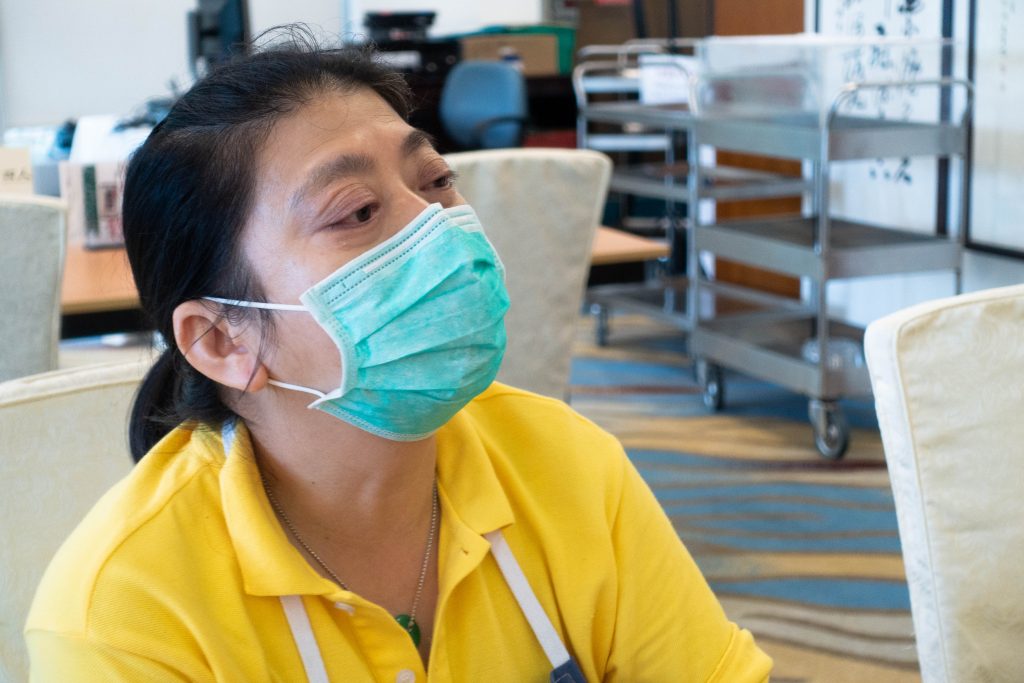Opened in 1978, Yun Chi Hsien is a destination restaurant in New Asia encompassed with history: Prof. Ambrose King and other Taiwanese scholars initiated the establishment of the place; Prof. Lu Yaodong personally passed down his beef noodles recipe; and Prof. Jao Tsung-I devised the name “Yun Chi Hsien” (literally meaning “where the clouds rise”).
Kitchen is the soul of every restaurant. Sweating in the kitchen of Yun Chi Hsien for over two decades are Nong and Sai Ha, two of the most experienced colleagues of this lunchtime hotspot. What stories would they tell us about their years “among the rising clouds”? Would they share their secret recipes for the signature dishes?


1. When did you start serving New Asia? And when did you start working in the kitchen of Yun Chi Hsien?
Sai Ha: I started working in New Asia in June 1997. I was working at the College Office for the first two years. Since 1999, I was assigned to Yun Chi Hsien every Wednesday and Friday to help prepare dumplings and arrange lunch or dinner parties. I was stationed here since three or four years ago.
Nong: I started in August 1997 as a kitchen staff here. Because of manpower rearrangements, I was working in Humanities Building for the first year, and got transferred back to Yun Chi Hsien since then. Before coming to New Asia, I have worked at the bar of the United College Restaurant for two years.
2. How do you divide the work in the kitchen?
Nong: I’m mainly responsible for braising the spiced beef, which I have been doing since day one! I also started make dumplings seven or eight years ago. Pork chops, mushroom and chicken, preserved vegetables and pork are Sai Ha’s territory. We actually don’t have a clear division of labor and just sharing the work among ourselves!
Sai Ha: I am in charge of pork chops and other stir-fry dishes. I also make the dumplings, which I have been doing for over twenty years, including the mixing of ingredients and seasoning. We make around 500 pieces for Wednesdays and 300 to 400 pieces for Fridays. They are all made fresh in the same morning.
3. Yun Chi Hsien underwent renovation and moved to the current location in 2013. What are the differences in terms of working environment before and after the move?
Sai Ha: It was very hot in the old kitchen! Not only the sun could shine through the windows, the ventilation was also poor. We only had two fans so you can imagine how hot it would get. The new kitchen is much bigger and the ventilation was significantly improved.
Nong: That’s right! I used to sweat so much working in the old kitchen when it was over 30 degrees in the summer. The old kitchen also did not have enough stoves and tools. The only stove was used for cooking both pork chops and scrambled eggs. Sometimes we even needed to use frying pans as serving plates. Things are so much better now. Because of the new kitchenware and bigger pots, our seasoning and portions need to be adjusted.



4. Spiced beef and dumplings are the signature dishes. Did anyone teach you the recipe? How do you prepare them?
Nong: No one really taught us any recipes. We just observed how colleagues in the past prepared the dishes, and slowly figured out the recipe by tasting and adjusting. The soup is made from dried flounder and pork bones. Our first job in the morning is to toast the dried flounder, put it in a soup sachet with peppercorn, then simmer it with pork bones. The marinade for the spiced beef is also prepared fresh every day. We don’t keep “old marinade”(note), because we don’t have a lot of leftovers.
(Note: “Old marinade” refers to used marinade sachet and is often mixed with new marinade to enhance flavors.)
Sai Ha: Yes. Unlike many Chiu Chow restaurants, we don’t keep our own “old marinade”. The one we make is also a bit sweeter. As for the dumplings, we use semi-fat pork, cabbage and wood ear. In the early days, mushroom was also added, but has been dropped for more than ten years because it was hard control its taste. Wood ear is crisper and has the texture similar to water chestnut.
